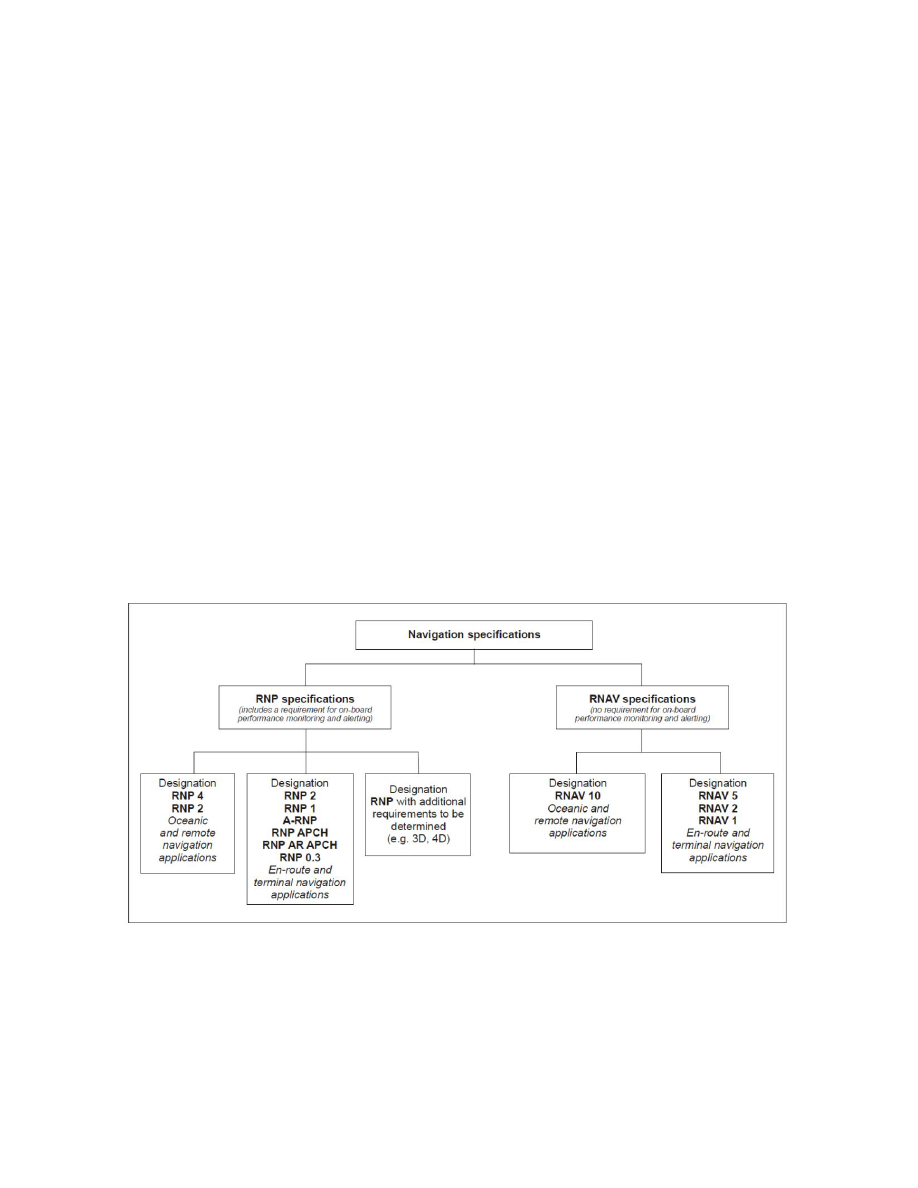
4/20/23
AIM
Section 2. Performance
−
Based Navigation (PBN) and
Area Navigation (RNAV)
1
−
2
−
1. General
a. Introduction to PBN.
As air travel has evolved, methods of navigation have improved to give operators
more flexibility. PBN exists under the umbrella of area navigation (RNAV). The term RNAV in this context, as
in procedure titles, just means “area navigation,” regardless of the equipment capability of the aircraft. (See
1.) Many operators have upgraded their systems to obtain the benefits of PBN. Within PBN there are
two main categories of navigation methods or specifications: area navigation (RNAV) and required navigation
performance (RNP). In this context, the term RNAV
x
means a specific navigation specification with a specified
lateral accuracy value. For an aircraft to meet the requirements of PBN, a specified RNAV or RNP accuracy must
be met 95 percent of the flight time. RNP is a PBN system that includes onboard performance monitoring and
alerting capability (for example, Receiver Autonomous Integrity Monitoring (RAIM)). PBN also introduces the
concept of navigation specifications (NavSpecs) which are a set of aircraft and aircrew requirements needed to
support a navigation application within a defined airspace concept. For both RNP and RNAV NavSpecs, the
numerical designation refers to the lateral navigation accuracy in nautical miles which is expected to be achieved
at least 95 percent of the flight time by the population of aircraft operating within the airspace, route, or
procedure. This information is detailed in International Civil Aviation Organization’s (ICAO) Doc 9613,
Performance
−
based Navigation (PBN) Manual and the latest FAA AC 90
−
105, Approval Guidance for RNP
Operations and Barometric Vertical Navigation in the U.S. National Airspace System and in Remote and Oceanic
Airspace.
FIG 1
−
2
−
1
Navigation Specifications
b. Area Navigation (RNAV)
1. General.
RNAV is a method of navigation that permits aircraft operation on any desired flight path within
the coverage of ground
−
or space
−
based navigation aids or within the limits of the capability of self
−
contained
aids, or a combination of these. In the future, there will be an increased dependence on the use of RNAV in lieu
of routes defined by ground
−
based navigation aids. RNAV routes and terminal procedures, including departure
procedures (DPs) and standard terminal arrivals (STARs), are designed with RNAV systems in mind. There are
several potential advantages of RNAV routes and procedures:
Performance
−
Based Navigation (PBN) and Area Navigation (RNAV)
1
−
2
−
1